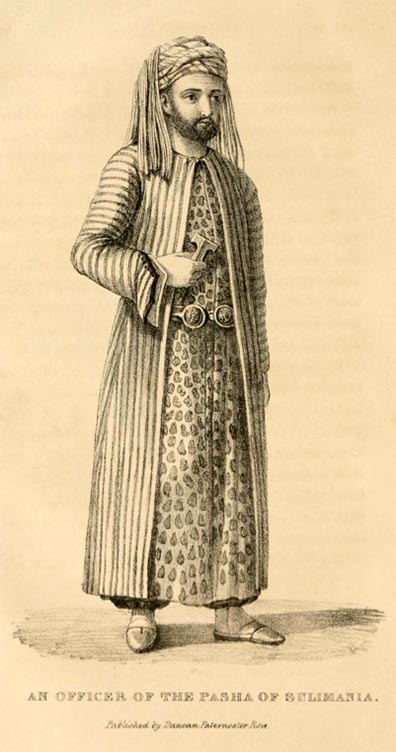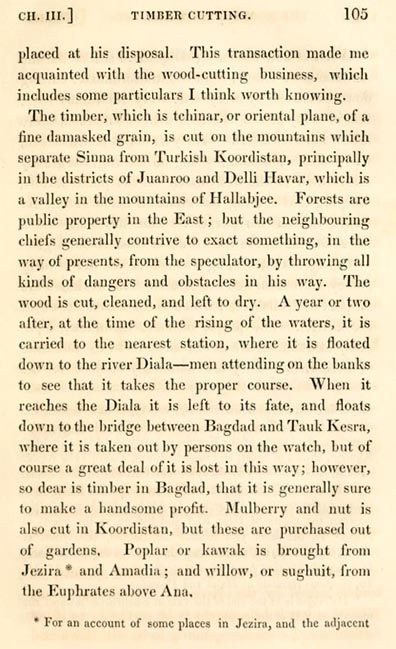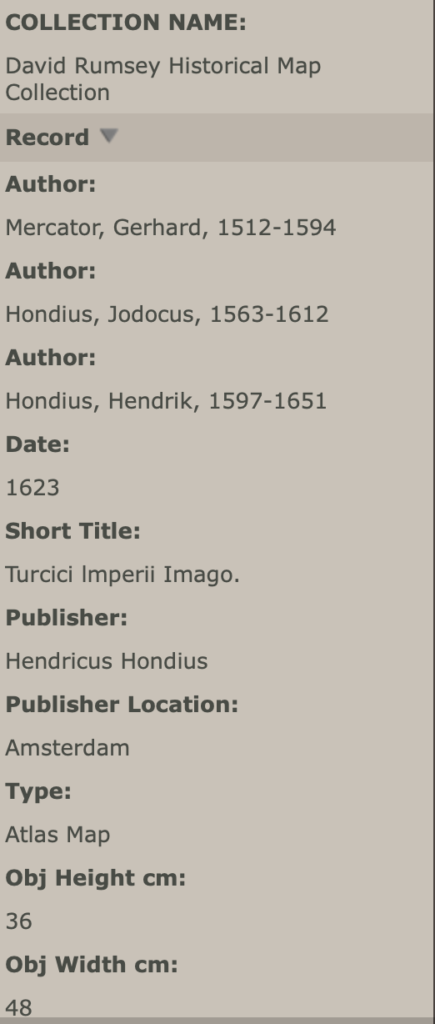As a fan of 19th century lithographs and steel engravings of images about the Middle East, I have enjoyed the images in Story of the Bible Animals by the Rev. J. G. Wood, published in 1888 and available on archive.org. In a previous post I posted images of camels. Here are a few of the other animals in the same volume.
Category Archives: Uncategorized
The Daughters of Kobani
I recently finished reading a fascinating and well-informed account of the role of female Kurdish fighters during the last decade in the fight against the Islamic State (ISIS) in northeastern Syria. This is The Daughters of Kobani by Gayle Tzemach Lemmon. Based on interviews with many individuals involved in the fighting, especially several of the major fighters, a powerful story is woven in a narrative that I find riveting at times. The fighters she describes are genuine heroines, young girls who rose to the occasion. Many of them gave their lives, others were tortured and abused when captured. There is a sub-story here as well, the realization of the horror unleashed by ISIS, including the many Western recruits for whom rape and murder were seen as a right. For Kurds, Yezidis and anyone who did not succumb to the terror-laden evil of ISIS, this was hell on earth.
The history of the region now known as the Middle East and previously styled the Biblical World or the Orient has seen the destruction of many people from the earliest recorded history. Those who believe in the stories of Adam and Eve will remember that Cain, one of the first couple’s two first-born sons killed Abel, his brother. As the story goes, the dispute was over religion because Cain was jealous that God preferred the animal sacrifice of Abel the herder rather than his own vegetable sacrifice as a farmer. But reading behind even these poetic lines the real issue here is about the shedding of blood. The rest of the Bible, Old and New Testaments, is a bloody book with God killing off the whole earth and even its animals with a flood, with the Children of Israel ordered by God to kill Canaanites without mercy, with Assyrians, Babylonians and Romans adding to the overall death toll.
When Islam superceded Judaism and Christianity in much of the region, the killing did not stop because human nature did not change. In truth the many reasons why humans kill each other are only superficially about religion, which is simply used as a justification. On a group level we call the desire to exterminate another group of people “ethnic cleansing” or “genocide.” Beyond this is the attempt to destroy a people’s culture and language. As White Americans flooded into the American West, the natives were either killed, put in reservations or forced to “assimilate” by conversion to Christianity and the White Man’s (and White Women’s as well) ways. The colonial expansion worldwide was almost always one resulting in cultural genocide. When Ataturk rebuilt the idea of Turkey as a modern state out of the ruined Ottoman hopes of World War I, the variety of ethnic groups in this state were redefined as “ethnic Turks.”
One of the longest lasting ethnic groups, saved from extinction in large part because of the highland enclave most have lived in, is the Kurds. Spread out geographically between modern Turkey, Syria, Iraq and Iran, all of these states have marginalized, persecuted and at times indiscriminately killed members of their Kurdish population. But the Kurds have survived, most recently establishing a quasi-homeland in northern Iraq following the fall of Saddam Hussein. To the extent that Kurdish issues make the world news, most recent discussion has been about the Kurdish fighters, who with outside support were able to wrest control of parts of northeastern Syria that had been overrun by the Islamic State (ISIS) less than a decade ago.
Among the Kurdish fighters were a number of women who took up arms and learned the manly art of war firsthand. This has been widely covered in the media, in part because of the common stereotype that women in the region are stay-at-home pawns of a region-wide patriarchal system that denies them rights. Admittedly, the number of women who are in the military or a local militia throughout the region are few, but when push comes to shove the Kurdish case shows that women are, and indeed have been (as can be seen below), fully capable of fighting for a just cause.
The unanswerable question after reading this book is what the future holds not only for Kurdish women, but for young girls and women throughout the region. The burden of sexism is a worldwide phenomenon that has gained more attention as the world becomes more globalized. Attention, however, demands action beyond the passing of laws that are not followed and ideals that are not approved. Due to this burden it is often forgotten that talking about women’s rights should also involve taking about human rights. Women are not a separate species, nor can achievement of equality ever be achieved without men realizing and advocating for that equality. Nor is the idea of equality the sterile notion of “sameness” any more than cultures having to all be the same. For Kurdish women the future is not just about their rights as women, but what it means to freely live as Kurds. The daughters of Kobani have opened a door; it is up to the sons of Kobani not to close it but keep it open for all.
More Maps of the Middle East
More and more maps of Yemen and the Arabian Peninsula are appearing in digital resources on the Internet. One of these is the David Rumsey Map Collection, housed at Stanford University. This overall collection with downloadable images in high resolution contains over 150,000 images, including some on Yemen, as well as other parts of the Middle East. The search function is easy to use. The maps are available under the Creative Commons License but not for commercial use.
Below are two closeups of maps that include Yemen.


Afârit on Parade

When I was young, one of the major sci-fi programs on television was Rod Serling’s Twilight Zone. It was fun because it was fiction. Now it seems that fiction has been resurrected as a substitute for reality. I am not talking about the folk who think the children of Adam chummed around with dinosaurs, since both humans and dinosaurs really have existed. And clearly it is not just “one” that has flown over the cuckoo’s nest. The QAnon conspiracy that has government Democrats (and perhaps those Republicans who voted to impeach Trump) having children for lunch (in their favorite pizza restaurant) is quite medieval. Just read the Malleus Maleficarum of five centuries ago and you will see that delicacy on the witch’s menu. And of course Hansel and Gretel would have made a savory feast as would Beanstalk Jack for the ogre. We used to call these fairy tales. It was supposedly good to scare children so they would behave and not eat too much gingerbread.
Then there is Mars. Whether or not the cow jumped over the moon, Martians have long been the fascination of those who look up in the sky and have no clue where the planet is. Martians may have served as the inspiration for the Trump supporters takeover of the capitol; after all it has been done before cinematically. The latest Rover from NASA is now on Mars looking for microbes; the UAE has a spacecraft taking pictures of Mars. Even Turkey wants to extend its political da’wa into space, at least as far as the moon.
So why all this interest in space when there are so many humanitarian and political crises on earth, especially in the Middle East? Just ask the former head of the Israeli Space Program. I do not mean Mel Brooks, who was a bit too spaced out. These are the words of Haim Eshed, who remained silent for years but now is revealing what Israel intelligence, the best in the world, has known for a long time:
“There’s an agreement between the US government and the aliens. They signed a contract with us to do experiments here.”
He explained that the aliens have a base on Mars: “Trump was on the verge of revealing [the aliens’ existence], but the aliens in the Galactic Federation are saying, ‘Wait, let people calm down first.'”
It is a good thing that Trump did not spill the beans (the same magical ones Jack used for his climb) or we would have to rename his posh residence Mars-a-lago.
It was reported earlier this week that Senator Ted Cruz was in Cancun to escape the deep state freeze in Texas. But a decoy of him was planted on the United flight. What if Ted Cruz is really a Martian agent and he had made a brief trip to Mars to brief his superiors before they reveal themselves? This would explain a lot of his behavior and his adoration of Trump. Most people do not know that the word “Maga” is actually the Martian word (yes they use words but they have not evolved sentences yet) for “We are coming for you.” My sources tell me that Trump is actually a Martian robot planted originally in New York, because no one there would have suspected. Just wait until 2024 when all Mars will break loose.
What can I say? Just this: may the farce be with you…
Nai Barghouti – “About a human” by Mahmoud Darwish
A beautiful song by Mahmoud Darwish, sung by the Palestinian Nai Barghouti.
Tabsir is back
In September 2005 I started the blog Tabsir (“Insight”) with several other colleagues to provide information on the Middle East as a supplement to the news and to note items of interest. The blog has been in hibernation since late 2018 as I simply had no time to keep it going. I am reviving the blog for posting items time to time and hope to involve several other academic colleagues as well.
Free Articles at Brill

These articles are freely available until 31 January 2015 on the Brill Website.
Islamic Law in the Modern World
Author: Aharon Layish
Islamic Law and Society, (Volume 21, No. 3, pp. 276-307)
An Epistemic Shift in Islamic Law
Author: Aria Nakissa
Islamic Law and Society, (Volume 21, No. 3, pp. 209-251)
Reconstructing Archival Practices in Abbasid Baghdad
Author: Maaike van Berkel
Journal of Abbasid Studies, (Volume 1, No. 1, pp. 7-22)
The Early Ḥanafiyya and Kufa
Author: Christopher Melchert
Journal of Abbasid Studies, (Volume 1, No. 1, pp. 23-45)
A Rich Look at the Kurds, #3

Pasha that accompanied Rich on his trip
When the British diplomat Claudius James Rich wrote his travel account of Kurdistan, there was already a shortage of firewood from the deforestation that had been going on for centuries, if not millennia. Here he describes the situation.















